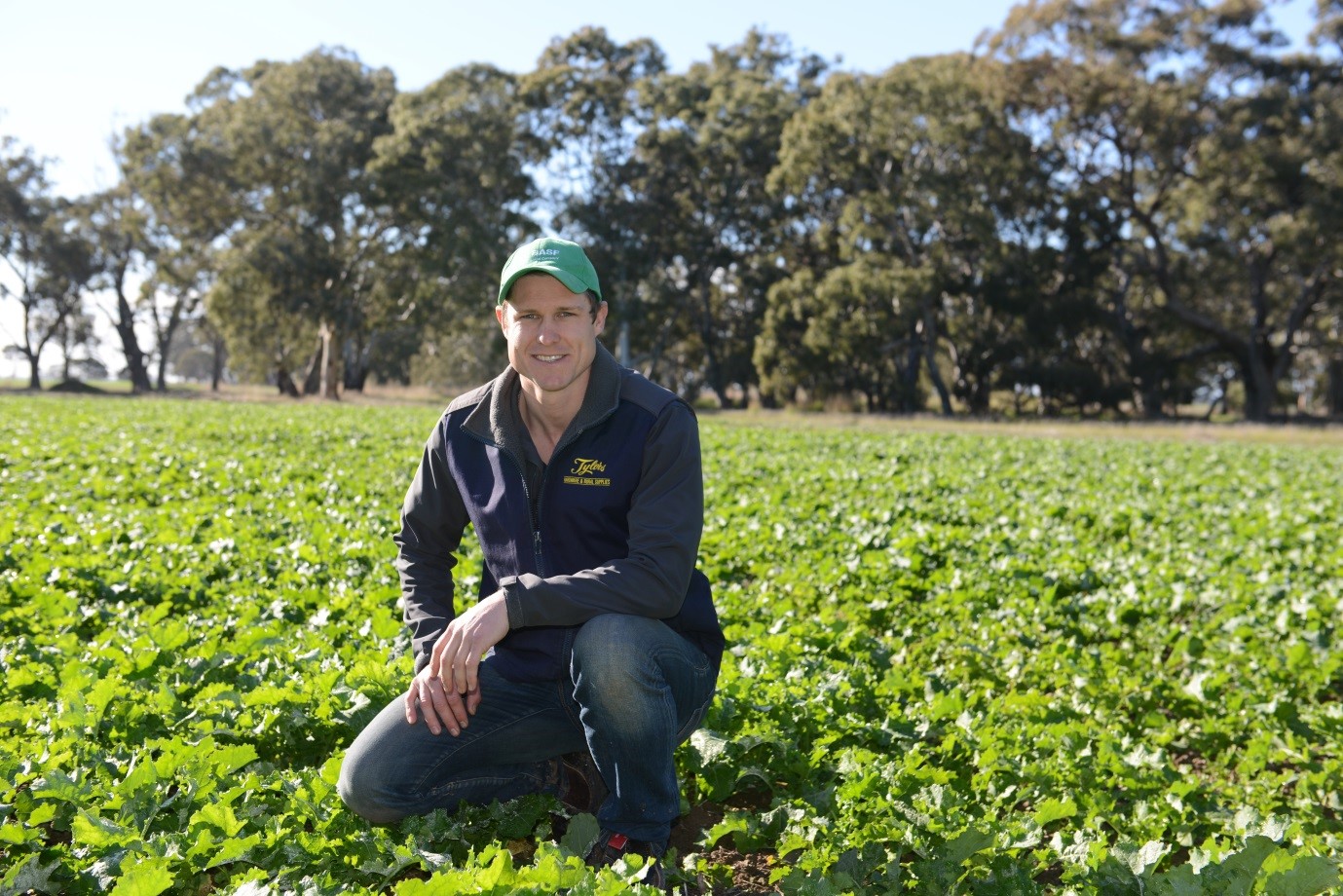Ben Cordes of Tyler’s Rural Supplies in Rupanyup has been impressed by the potential of Butisan to improve the management of annual ryegrass in all types of canola.

“Unfortunately, with the way we are cropping, ryegrass is a weed that can adapt quite well – so control is a challenge in most crops we grow. We have identified that we've got Group A resistant ryegrass right across the board.”
The situation Ben Cordes describes in the Wimmera has become very familiar in cropping areas all over southern Australia, so his positive experience with Butisan as a new option for controlling ryegrass in the canola phase of the crop rotation is good news for farmers outside Victoria as well.
“I guess we are always looking to new cutting-edge tools,” Ben says, “and the introduction of a new pre-emergent herbicide registered for controlling ryegrass is fantastic for our area.”
Ben is an agronomist at Tyler’s Rural Supplies in Rupanyup. He explains that some local growers have been modifying their crop rotations to help overcome problems with herbicide resistance. “Around here we've got mixed farms, where perhaps they're open to oaten hay or vetch hay in their program,” he says. “Some growers do have sheep, so they may leave a paddock out in their rotation. However, with the guys that are continuously cropping, the reliance on herbicides is quite high. As a result of that, we're dealing with some resistance issues that have to be handled with alternative herbicides."
The release of Butisan from BASF in 2017 gave Ben the chance to include it in a farmer trial alongside a propyzamide-based product currently used as part of an overall annual ryegrass control strategy in TT canola.
“It is always good to compare a new product against district practice,” Ben explains. “The beauty about this trial for Butisan is that we specifically chose a paddock with a history of moderate ryegrass levels.”
The initial early-season assessment of the trial was very positive, with good control of the ryegrass across the paddock.
“Considering what we were expecting, there was an amazingly low level of ryegrass numbers – which we were grateful for,” Ben says. “Butisan did an excellent job.”
Ben says the crop was very slow to gain vigour, held back by virtually no rainfall in June (2017) and a series of frosts. While it was failing to compete with the weeds, Butisan maintained control. “This particular variety didn’t get going the way we thought it would. But the herbicide held the weeds until certainly August. Then the canola finally took off and provided the crop competition with the weeds, and it came home with a wet sail.”
The expectation of long-lasting control is another reason why many growers and advisers are enthusiastic about the launch of Butisan, making potent Group K chemistry available for pre-emergent use in canola.
Ben is very aware that good early control can set up the crop for success.
“There's no doubt that prevention is always better than cure. We find that using quality pre-emergents, getting good results, and taking pressure off the post-emergents is crucial."
The results from the Butisan trial in TT canola have been encouraging and Ben says it is a product that will be looked at across all canola production systems in the future.
“One of the other promising things is crop safety,” he said. “It appears to be very soft on the crop.”
Butisan has good solubility in water, which helps it move readily back into the furrow and provide superior in-furrow control. Ben believes there’s an additional spin-off benefit there.
“We are dealing with a lot more residue in our paddocks than we have before, so some of the other products perhaps aren't as water soluble as Butisan.”
Its combination of excellent control with exceptional crop safety is bound to see Butisan take a key role in many farmers’ programs.
“I think, going forward, Butisan will be an important tool in the rotation,” says Ben. “If you are continuing to grow canola, Butisan is a good product to look at."